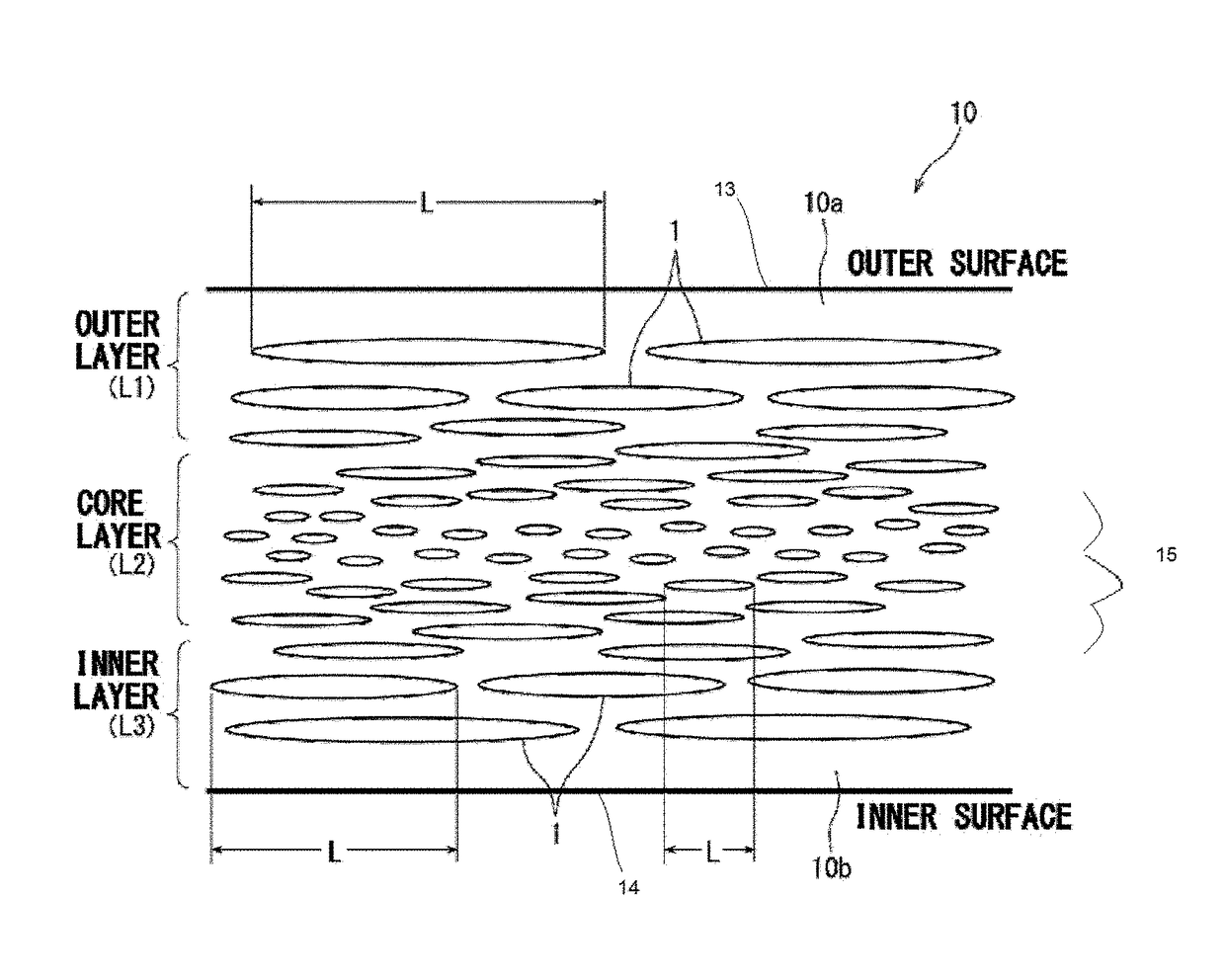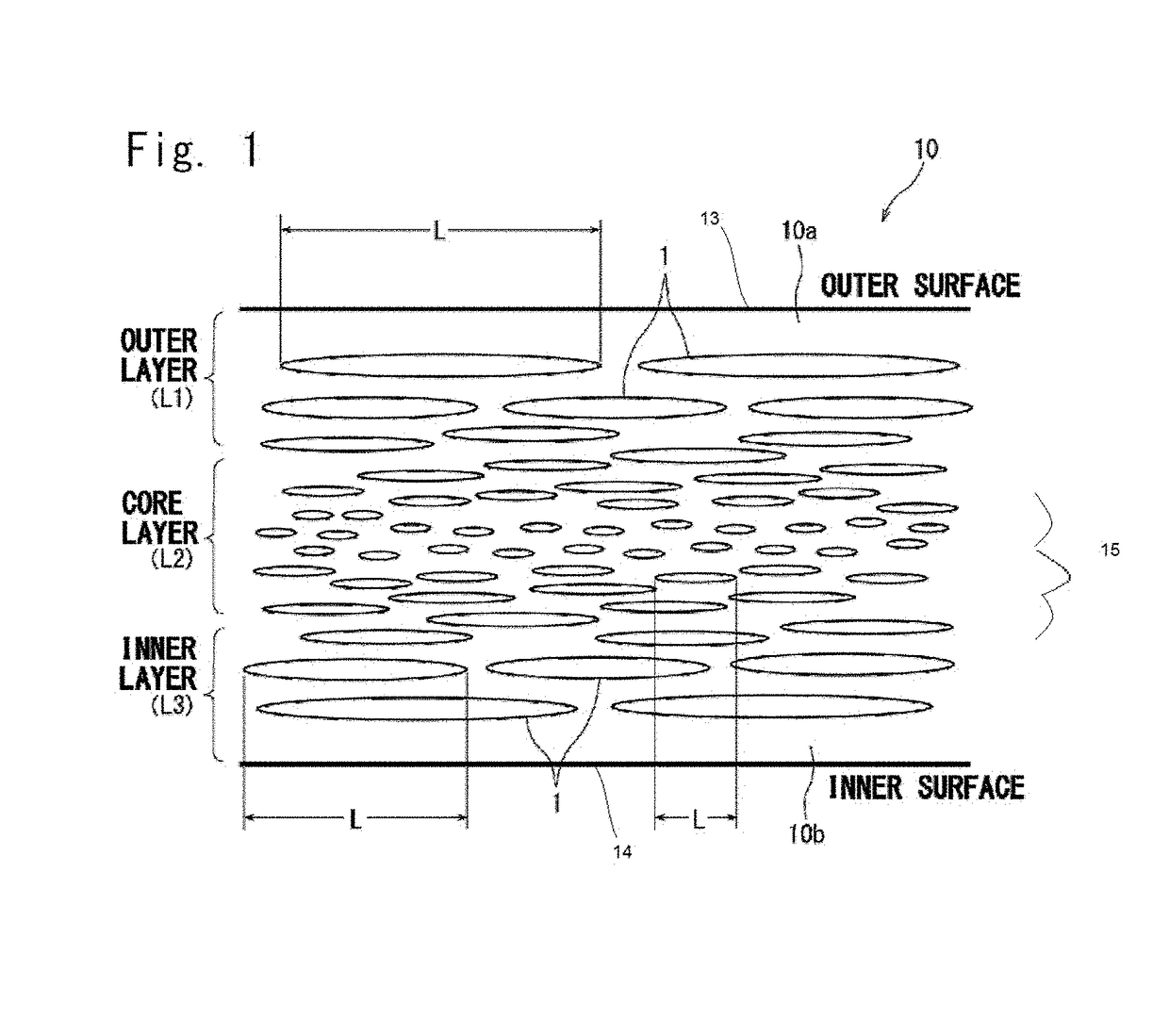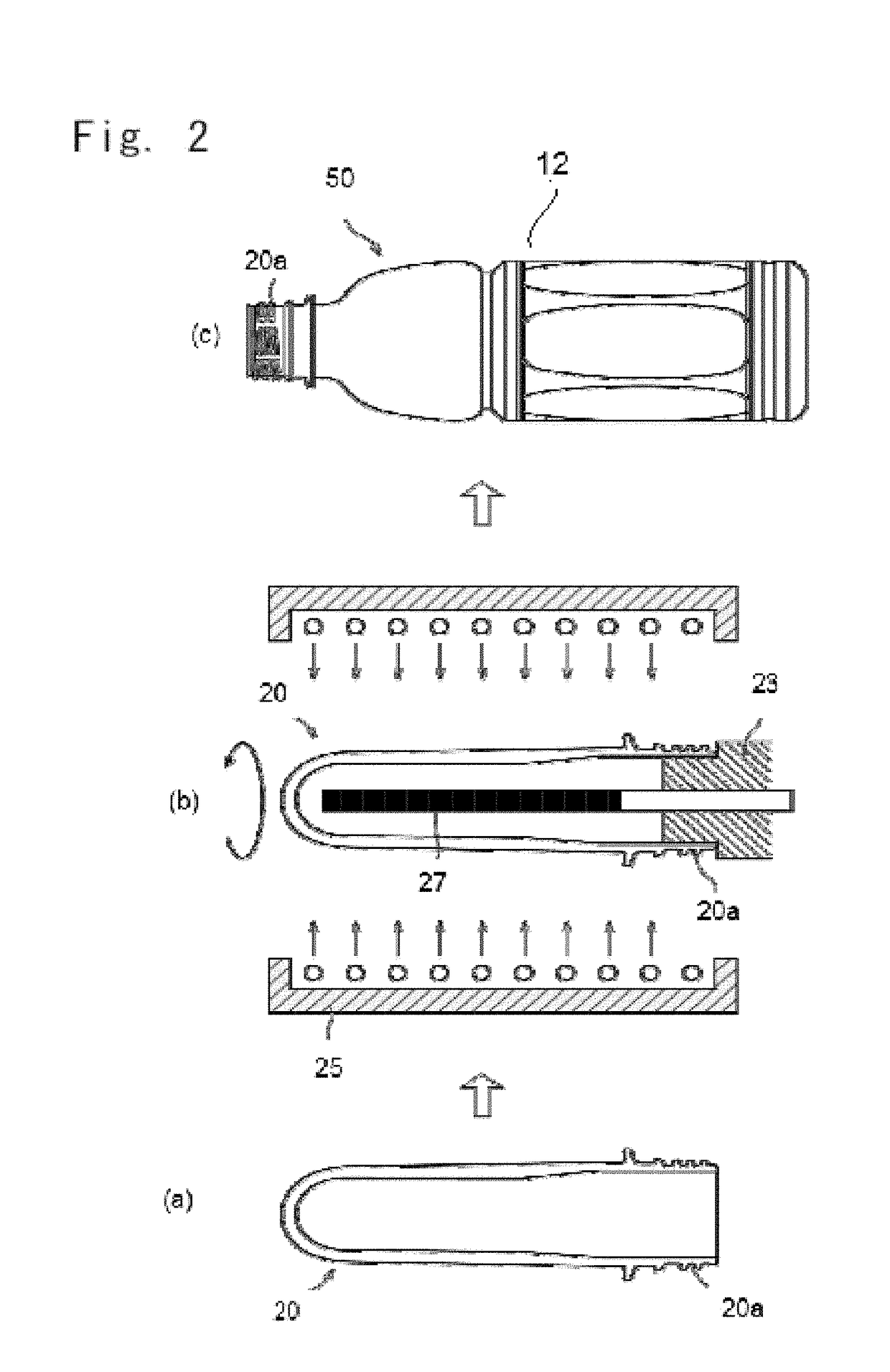Foamed and stretched plastic bottle
a technology of plastic bottles and foils, applied in the direction of containers preventing decay, machines/engines, other domestic objects, etc., can solve the problems of insufficient light-shielding properties, difficult to maintain transparency in recycled resins, and inability to add coloring agents, etc., to achieve excellent light-shielding properties without decreasing strength, maintain high degree of light-shielding properties, and reduce the thickness of the body portion of the bottl
- Summary
- Abstract
- Description
- Claims
- Application Information
AI Technical Summary
Benefits of technology
Problems solved by technology
Method used
Image
Examples
experimental example 1
[0136]A commercially available PET resin (intrinsic viscosity: 0.84 dl / g) for bottle sufficiently dried by using desiccator / drier was fed into a hopper of an injection-forming machine. Further, a nitrogen gas was fed in an amount of 0.15% by weight through the middle of the heating cylinder of the injection-forming machine, and was kneaded with the PET resin so as to be dissolved therein. In order to suppress the foaming in the mold, the pressure in the mold had been elevated in advance with the air (pressure in the mold, 5 MPa) and while adjusting the pressure therein so will not to permit the foaming (pressure of 50 MPa for 12 seconds until injected), the PET resin was injected-formed to obtain a container preform (weight, 31.6 g) of the shape of a test tube imbibing the gas.
[0137]The gas-imbibing preform was heated from the outer surface side thereof by using a quartz heater and was heated from the inner surface side thereof by inserting therein an iron core heated by high freque...
experimental example 2
[0141]A gas-imbibing preform was prepared under the same conditions as those in Experimental Example 1, and from which a foamed bottle was formed in the same manner as in Experimental Example 1 but elevating the temperature of the iron core. The temperature just before the blowing was 107° C. on the outer surface and 118° C. on the inner surface.
[0142]By using the SEM, the foamed bottle was observed in the same manner as in Experimental Example 1 and was measured for its distribution of cell diameters to learn that a number of flat cells had been formed in the wall of the bottle. The average lengths of the foamed cells in the axial direction of the bottle were 33.03 μm in the outer layer, 24.96 μm in the core layer and 34.81 μm in the inner layer. Namely, there had been formed the foamed cells having the same length distribution as that of Experimental Example 1. The foamed cells occupied the foamed region at an area ratio of 19.0%. The average number of the cells was 53.0 in the di...
experimental example 3
[0143]A gas-imbibing preform was prepared under the same conditions as those in Experimental Example 1, and from which a foamed bottle was formed in the same manner as in Experimental Example 1 but lowering the temperature of the iron core. The temperature just before the blowing was 103° C. on the outer surface and 90° C. on the inner surface.
[0144]By using the SEM, the foamed bottle was observed in the same manner as in Experimental Example 1 to confirm that there had been formed flat cells but in a small number. The average lengths of the foamed cells in the axial direction of the bottle were 33.27 μm in the outer layer, 12.34 μm in the core layer and 8.89 μm in the inner layer. Namely, there had been formed the foamed cells having such a gradational tendency that the foamed cell sizes gradually decreased from the outer surface side toward the inner surface side. The foamed cells occupied the foamed region at an area ratio of 4.8%. The average number of the cells was 10 in the di...
PUM
| Property | Measurement | Unit |
|---|---|---|
| average cell length L3 | aaaaa | aaaaa |
| average cell length L3 | aaaaa | aaaaa |
| area ratio | aaaaa | aaaaa |
Abstract
Description
Claims
Application Information
 Login to View More
Login to View More - R&D
- Intellectual Property
- Life Sciences
- Materials
- Tech Scout
- Unparalleled Data Quality
- Higher Quality Content
- 60% Fewer Hallucinations
Browse by: Latest US Patents, China's latest patents, Technical Efficacy Thesaurus, Application Domain, Technology Topic, Popular Technical Reports.
© 2025 PatSnap. All rights reserved.Legal|Privacy policy|Modern Slavery Act Transparency Statement|Sitemap|About US| Contact US: help@patsnap.com



